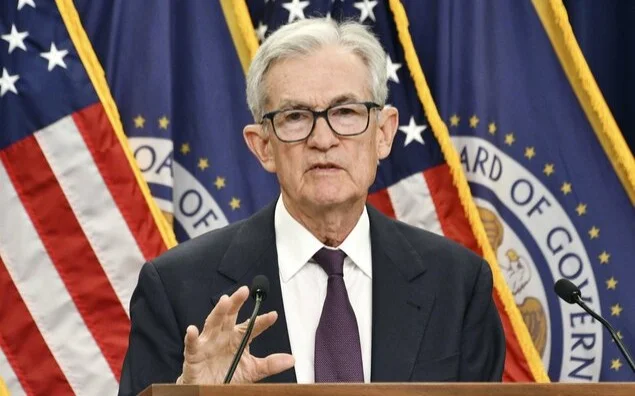U.S. Fed cuts key interest rate for 1st time in 2025
The U.S. Federal Reserve on Wednesday lowered its benchmark interest rate for the first time in 2025 and signaled the possibility of two more cuts by the end of this year amid heightened concerns over weakening jobs growth, Kyodo reports.

Following a two-day policy meeting, the Fed said its target range for the federal funds rate will be lowered by 0.25 percentage point to 4.00-4.25 percent.
"Job gains have slowed, and the unemployment rate has edged up but remains low. Inflation has moved up and remains somewhat elevated," the Federal Open Market Committee said in a statement.
The policy-setting committee, which voted 11-1 for the quarter-point interest rate cut, added it has judged that "downside risks to employment have risen."
Fed chief Jerome Powell told a press conference that "the balance of risks has shifted" to the labor market from inflation.
"Accordingly, we judged it appropriate at this meeting to take another step toward a more neutral policy stance," Powell said.
But as President Donald Trump's higher tariffs have begun to trigger price increases for some goods, he noted that U.S. government policies continue to evolve and their effects on the economy remain uncertain.
The cut was the committee's first since Trump's return to the White House in January and comes after months of pressure from him to lower borrowing costs.
Trump has slammed Powell for not leading Fed policymakers to cut interest rates earlier, repeatedly calling him "Mr. Too Late."
The last time the U.S. central bank reduced the federal funds rate, which commercial banks charge each other for overnight loans, was in December, when it announced a 0.25 point cut.
Until now, despite increased political pressure from Trump to change course, Powell and many other Fed policymakers had suggested they would need more time and economic data to assess the potential for inflationary effects from his administration's hefty tariffs.
The FOMC's Wednesday decision was not unanimous. Stephen Miran, a close economic adviser to Trump who was sworn in Tuesday as a member of the Fed's board, called for a steeper 0.5 point cut.
In the central bank's latest quarterly summary of economic projections, the median forecast among FOMC members for the appropriate level of the federal funds rate at the end of this year was 3.6 percent, meaning that two additional rate cuts at the usual size of a quarter-point each could follow.
The FOMC has two meetings remaining this year, in October and December. The summary forecasts that the rate will be lowered to 3.4 percent at the end of 2026.
The Fed has faced an increasingly difficult task in balancing its dual mandate of maintaining stable prices and achieving full employment.
In recent months, data has shown that hiring and job creation in the United States are slowing.
But at the same time, consumer prices have climbed again, with the newest data released last week for August showing year-over-year inflation of 2.9 percent, the highest since January and well above the Fed's 2 percent target.
Concerning additional rate adjustments, Powell indicated a cautious approach, saying, "We're in a meeting-by-meeting situation." He emphasized that Fed policymakers will need to examine carefully the incoming economic data.
